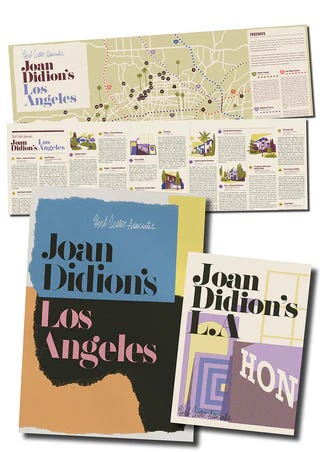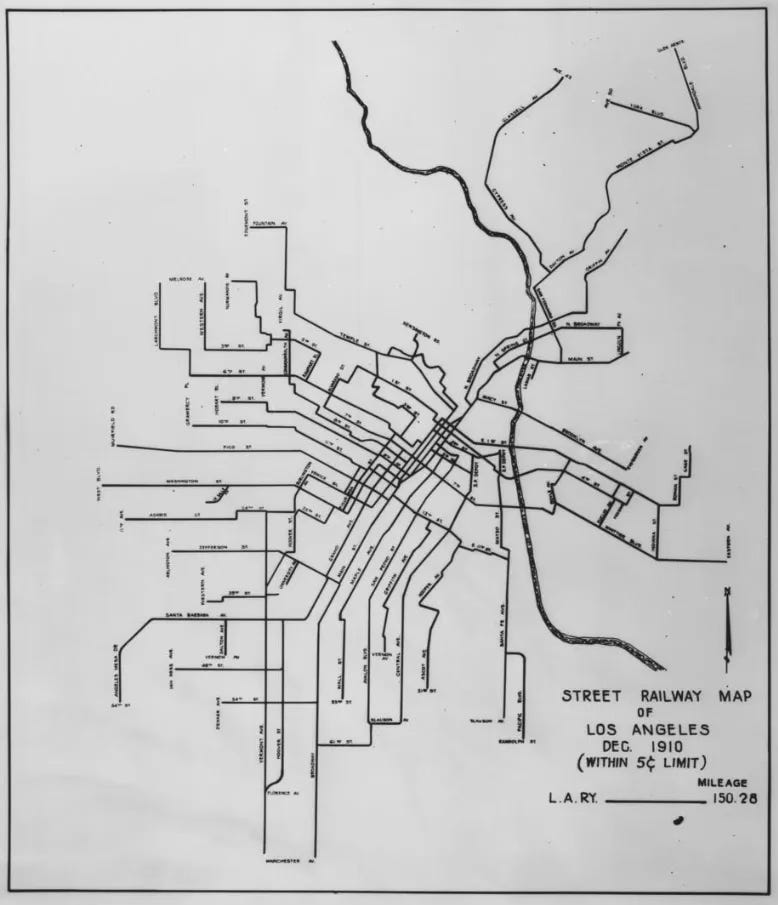Los Angeles is always on my mind. It embodies an American courage that if you ignore all the misdeeds and crimes, represents a spirit of adventure, a feeling of roaming and traversing the unknown…for the sake of finding the self. Plus it is a perfect reminder, call it a constant reminder of the impermanence of things…
And sometimes it is because of Joan Didion and the way she haunts that brute of a city. Here is this fabulous LA Times story about her favorite places.
Speaking of LA Times - don’t miss my piece on Carmel Valley.
“It is hard for people who have not lived in Los Angeles to realize how radically the Santa Ana figures in the local imagination. The city burning is Los Angeles's deepest image of itself; Nathanael West perceived that, in The Day of the Locust; and at the time of the 1965 Watts riots what struck the imagination most indelibly were the fires. For days one could drive the Harbor Freeway and see the city on fire, just as we had always known it would be in the end. Los Angeles weather is the weather of catastrophe, of apocalypse, and, just as the reliably long and bitter winters of New England determine the way life is lived there, so the violence and the unpredictability of the Santa Ana affect the entire quality of life in Los Angeles, accentuate its impermanence, its unreliability. The wind shows us how close to the edge we are.”
―Joan Didion, Slouching Towards Bethlehem
As Didion said, there is an “Uneasy Suspension" within Californians. A feeling of both deep optimism and deep loss, stemming from the state's position at the edge of the continent, meeting the Pacific Ocean. As she says "the place we run out of continent” - and I feel it. Having had a home in California for five years, spending endless days and nights here, I feel that every day. Edged, marge, bourne. I wake with the potential of achieving every dream I ever had, and that in an instance it can all be violently taken away from us. A few years ago we had to evacuate and my world became so quiet. Noiseless. We volunteered at an animal shelter to keep us busy, to do something, to feel like we were part of the community. To show ourselves that we were good people, that we helped, that we weren’t just waiting for things to come to us. And I stood with soot on my face, pilling horse shit into buckets…holding Michael’s hand…and that loss consumed me mixing with my essential spirit of hopefulness. Bile bitter almond swirl, and then spit…
Writers are often writing about LA, all its splendor, all its decadence, all its muck and mire. And the recent fires (PS. not the mayor’s fault) and now the mud slides have me reading Didion’s thoughts over and over. It has always been that place, a locus that exists in the imagination, a place that somehow should probably not be there - spitting off the edge of the world. Its icy ocean, its kissed mountains, its billowy desert, its pompous canyons, its blue skies. I was there last week and it rained and it made zero sense to me. It felt outer-worldly and magical. Even my very worldly and intelligent 80 something year old mother came, conquered it fast and decided she loved it, thought it was not only beautiful but transfixing.
Brigitte Lacombe, Joan Didion, New York, 1996, 1996. Black-and-white photograph. 16 × 20 in. (40.6 × 50.8 cm). Courtesy of the artist and Lacombe, Inc. (PEREZ ART MUSEUM, MIAMI)
I have for the last twenty years been almost-living in LA. Every time we pull the trigger to nest, something shifts. We start the turning turning turning like a dog settling in to get cozy and nope, the seat isn’t quite right…nope keep turning shifting turning the other direction. And then I am traveling and not living in LA full time.
Los Angeles is 72 suburbs in search of a city, said Dorothy Parker.
(I mean she hasn’t been there for a while to be fair)
But as a New Yorker I understand that, many places making up a whole. And in LA as I drive the city plumb I have found that. Unputdownable places connecting and weaving to make a whole. Where New York has Central Park and green space to connect us, LA has the freeway. The freeway is public space, it’s public art. It is on the freeway where most Angelenos connect and feel - whether it’s a bus (which works pretty well and seniors travel for under a dollar so by the way), with a chauffeur (although few Angelenos like that, the city is about THE drive, about driving the verb, so many even the stupid rich love to do it, to feel that freedom), on the metros or trains, or just in your car (EV or not). Driving is a quintessential way of being an Angeleno, whether you fight it or not. I love this piece in the New Yorker about how WAZE (wAzaY as my sister in law calls it) plays a role in the city of angels.
Plus I love what Brian Potter writes about “How the Car Came to LA:”
First founded in 1781, Los Angeles was a small city through the 19th century. As late as 1880 the city had only 11,000 people, compared to almost 2 million in New York and over half a million in Chicago. But the city began to grow rapidly after the Southern Pacific Railroad connected it with the rest of the country in 1876. Between 1880 and 1930, LA grew on average around 10% per year, and from 1890 to 1930, when it hit 1.2 million inhabitants, LA was the fastest growing city in the US.
Unlike East Coast cities, Los Angeles was never a true “walking city." It grew hand in hand with the electric railway, and by 1910 boasted both an extensive local streetcar system (which operated within the city) and the largest interurban electric rail system in the world. The Pacific Electric Railway’s (PE) 1,000+ miles of track connected Los Angeles to other communities across four counties.
Because Los Angeles had grown up with mechanized transportation, it never developed the density of east coast cities. Rather than growing upwards with skyscrapers, Los Angeles spread outwards, building an “unparalleled number” of single family homes. This sprawl and low density was touted as a positive feature of living in Los Angeles.
And so here we are.
The freeway connects us, and if you read the history on how it developed (with the automobile) and the corruption and mafia around it - you will also fall in love with this complicated place. It’s the freeway where you can urge your frustrations, cry your heart out, scream your Gaga.
I have driven it with the top down with wind in my hair and a simple Hollywood dream, just like everybody else. And somehow that city bullshits that anything is possible. And that continues to be a lie, until it’s not.
It is the freeway where you can meet cute and even dance like a colorful fool. It is the freeway where you see life, the homeless, the celebrities (yes even Chapelle Roan drives), the workers, and the politicians that adroitly juggle. We’re all there, trying to avoid the traffic, pretending that we know how it flows and pelts.
If you happen to be in Los Angeles and need something fun to do, well I have just the thing for you.
Because as Didion said, “There are so many different parts of LA. You can never really hate it all.”
PORN ROCK: The Obscenity Trial of Jello Biafra at the Eastwood Performing Arts Center. And if you don’t know about this famed trial that took place in Los Angeles, you will love reading all about it and how it impacts free speech today.
Still on for March 21, 22 at 8PM, and March 23, at 3PM.
I wrote about this fascinating trial for SPIN magazine - here is that story.
“The apparent ease of California life is an illusion, and those who believe the illusion real live here in only the most temporary way. I know as well as the next person that there is considerable transcendent value in a river running wild and undammed, a river running free over granite, but I have also lived beneath such a river when it was running in flood, and gone without showers when it was running dry.”
―Joan Didion, The White Album: Essays










